Review of the smartphone ASUS ZenFone Max Pro (M1) ZB602KL
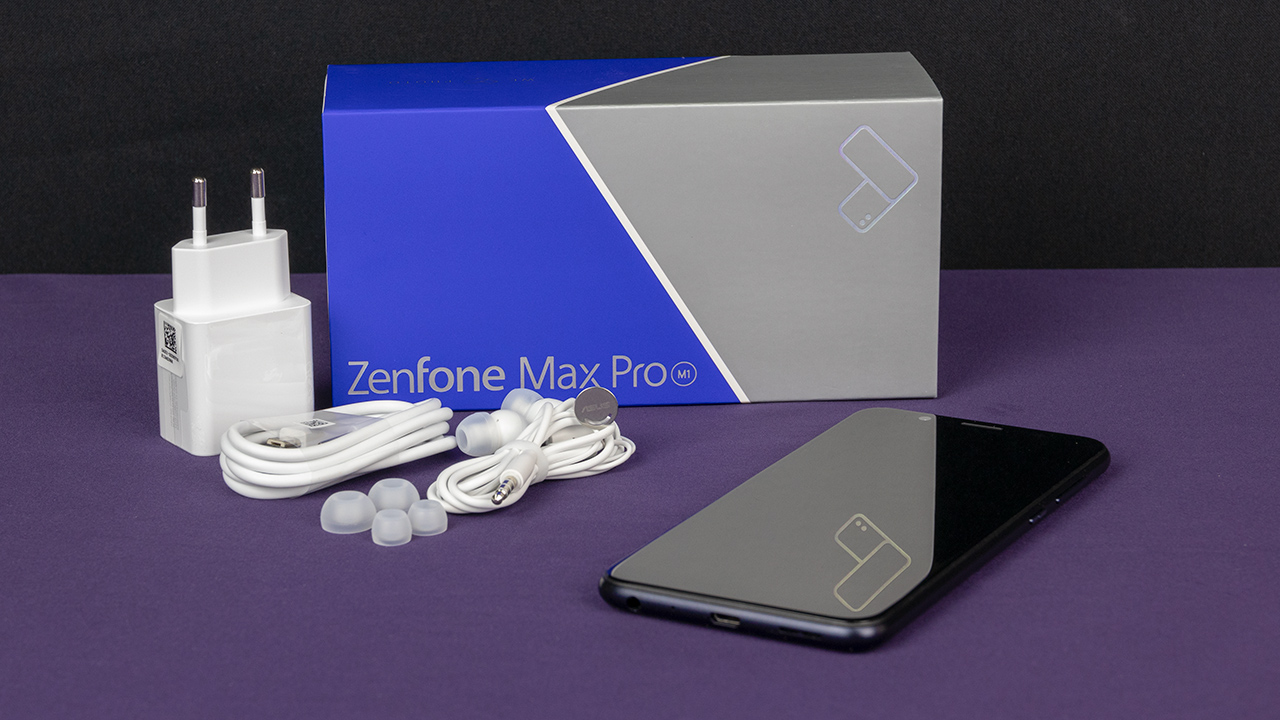
ASUS ZenFone Max Pro (M1) occupies a special place among the other Zenfon. It does not stand out due to the most powerful processor in the world or bold design. For this, there are other models in the ZenFone family, for example, the ASUS ROG Phone , which was recently introduced at Computex 2018. The highlight of the ASUS ZenFone Max Pro (M1) is completely different. The smartphone has a clean Android 8.1 Oreo, it is equipped with a capacious 5000 mAh battery and has a high-quality display.
Specifications ASUS ZenFone Max Pro (M1)
Display : 6 inches, 2160x1080, 18: 9, IPS, brightness 450 cd / m ^ 2, contrast 1 500: 1
Processor : Qualcomm Snapdragon 636, 8 cores, 64-bit (4x Kryo 260 1.8 GHz + 4x Kryo 260 1.6 GHz)
Graphics : Qualcomm Adreno 509
RAM : 3 or 4 GB LPDDR4X (depending on version)
Data storage : 32 or 64 GB (depending on version)
Memory card : MicroSD, up to 2 TB
SIM card : 2x Nano -SIM
Cameras :
- Front : 8 megapixel, f / 2.0 viewing angle 85 °
- Rear main : 13 megapixel, HDR, phase autofocus, LED flash
- Rear extra : 5 MP, background blur function
Video recording : 720p / 1080p / 4K
Cellular : 2G / 3G / 4G,
Wireless networks : Wi-Fi 802.11a / b / g / n, 2.4 GHz, Bluetooth 5.0
NFC : Yes
Navigation : GPS, AGPS, GLONASS, BDS
Sound : 1 speaker (5-magnetic with NXP intelligent amplifier)
Microphone : Dual built-in microphone with noise cancellation technology
Battery : 5,000 mAh
Operating system : Android 8.1 Oreo
Dimensions : 159 x 76 x 8.45
Weight : 180 grams
Price modification 3 / 32 GB : 13 990 rubles
Price modification 4/64 GB : 15 990 rubles
Screenshots CPU-Z




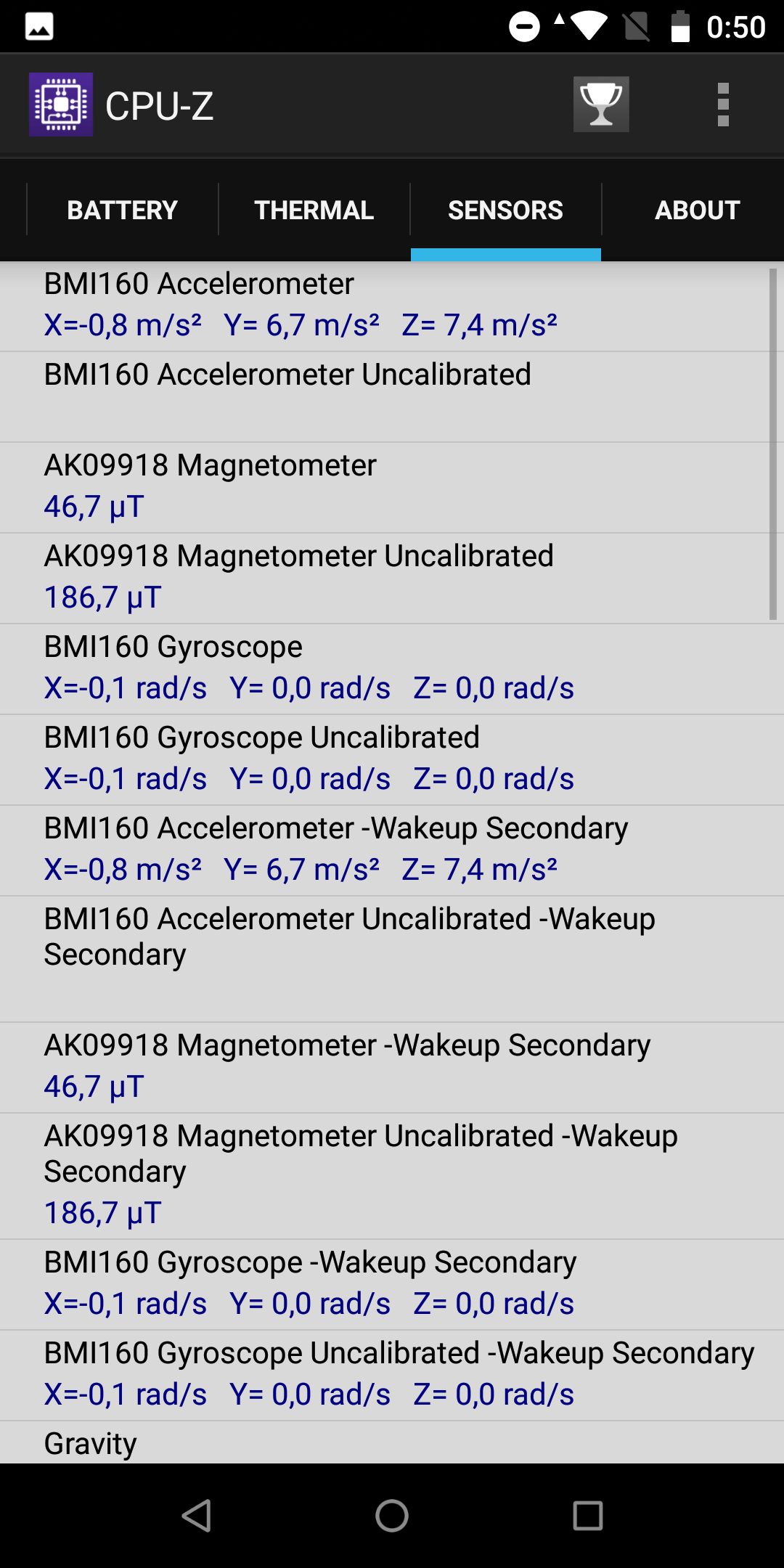






Package, set of delivery
The smartphone comes in a small, modest box. Packages of similar size and format are often found in Zenphons, so we can say that everything is done in the corporate style.

Inside, besides the phone itself and the mandatory "papers", there is a power supply, a micro-USB cable in a tight braid, a headset with spare ear pads and a "clip" for a tray with a sim card. Given the cost of a smartphone, such a set of accessories can be called extended. The sound quality of the complete headset is very high - even those with a delicate ear will be satisfied. Well, removable ear cushions will help to achieve maximum comfort to any user. In addition, they are made of soft silicone that will provide good sound insulation due to tight fit.
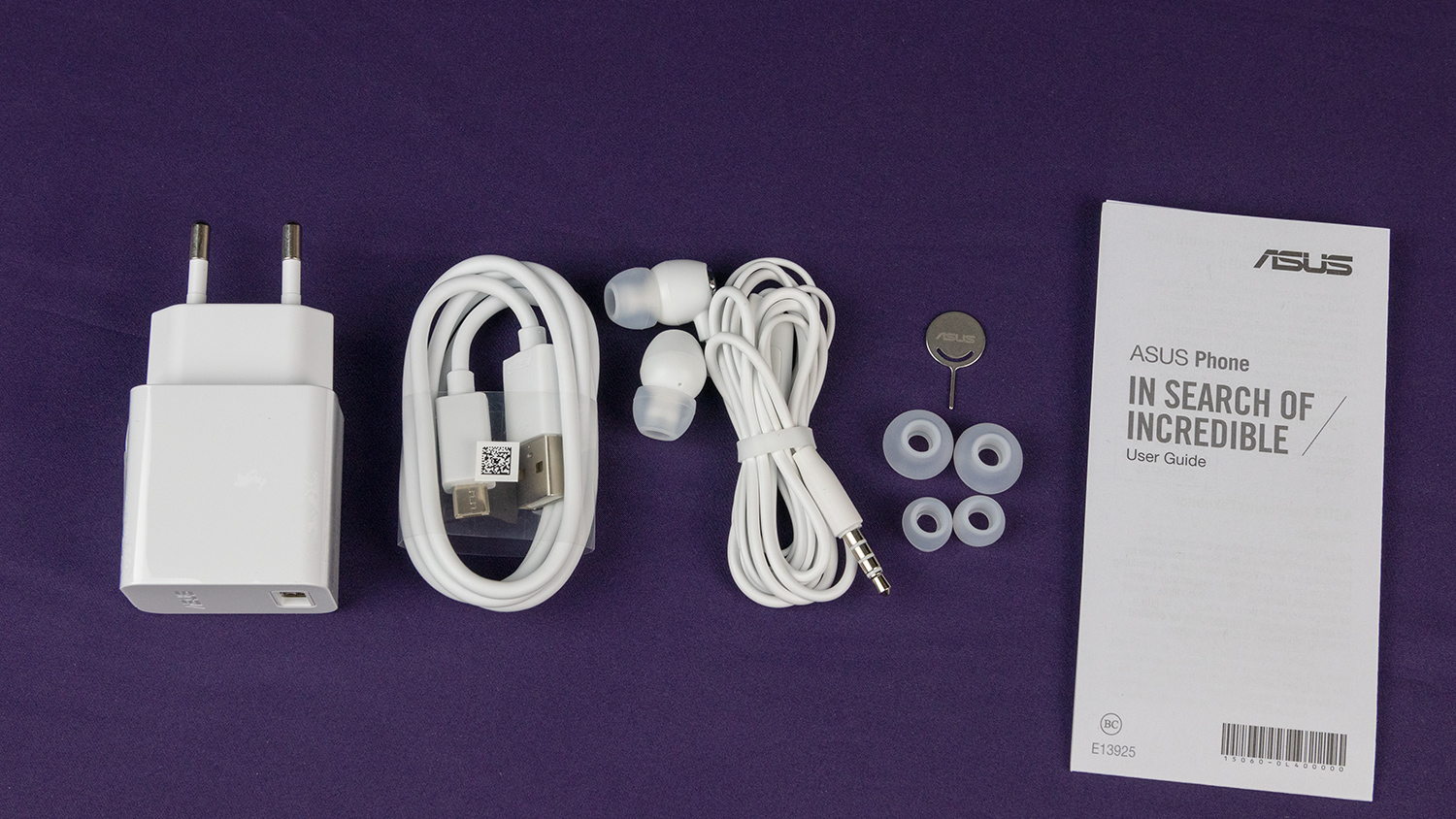
Design
ASUS ZenFone Max Pro (M1) is made in a classic modern style. Its screen occupies almost the entire area of the front panel, which is covered with a single glass with curved edges 2.5-D.

Above the screen is a standard set of sensors: approximation and illumination. In addition to them and, of course, the dynamics, here is a selfie camera with flash. The latter almost completely merges with the body of the smartphone - exactly until it is needed to take a selfie in a dark room.
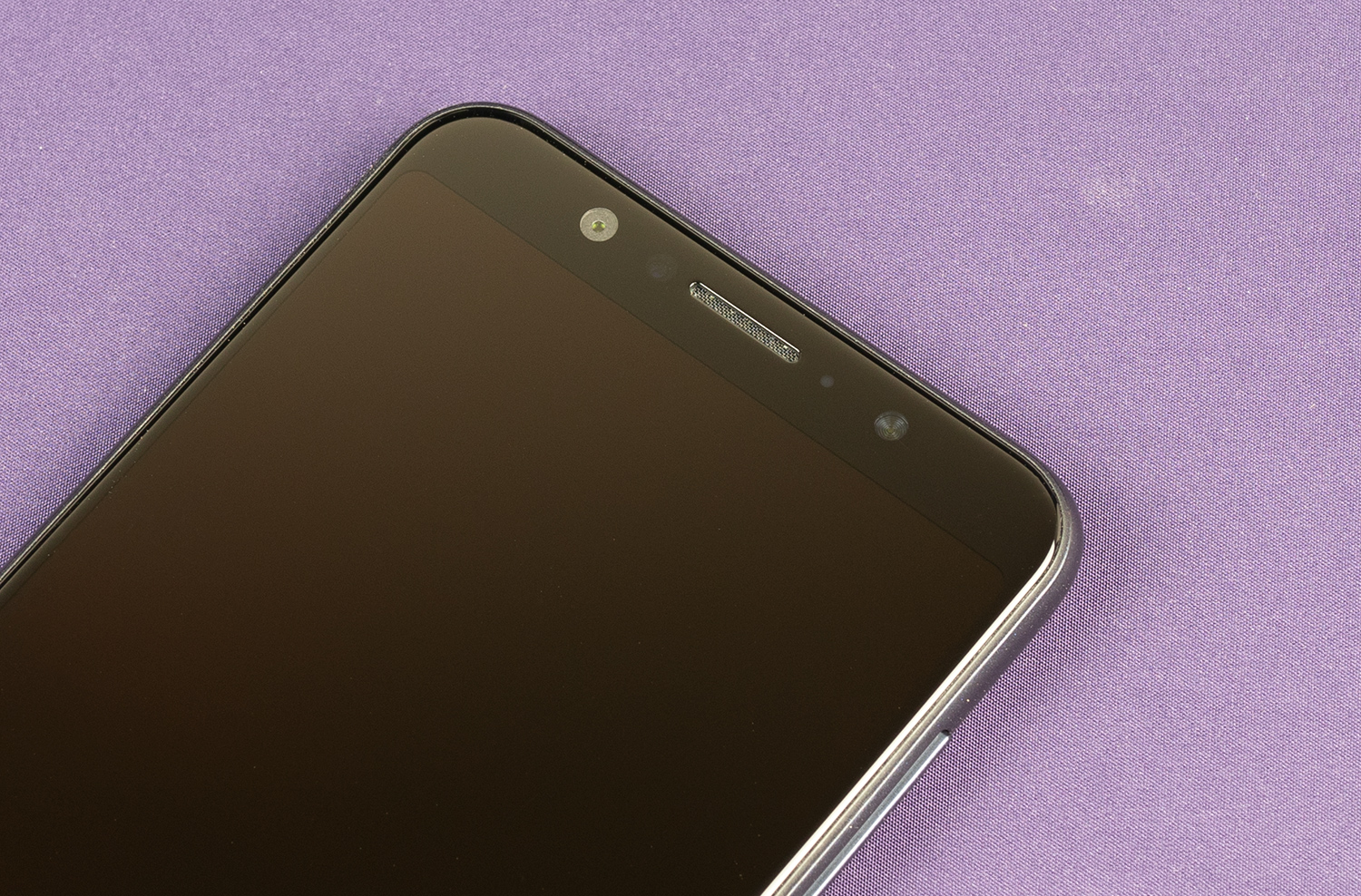
The reverse side of the smartphone is completely made of metal. Only its upper and lower edges were plastic, where the ASUS ZenFone Max Pro (M1) antennas are located.
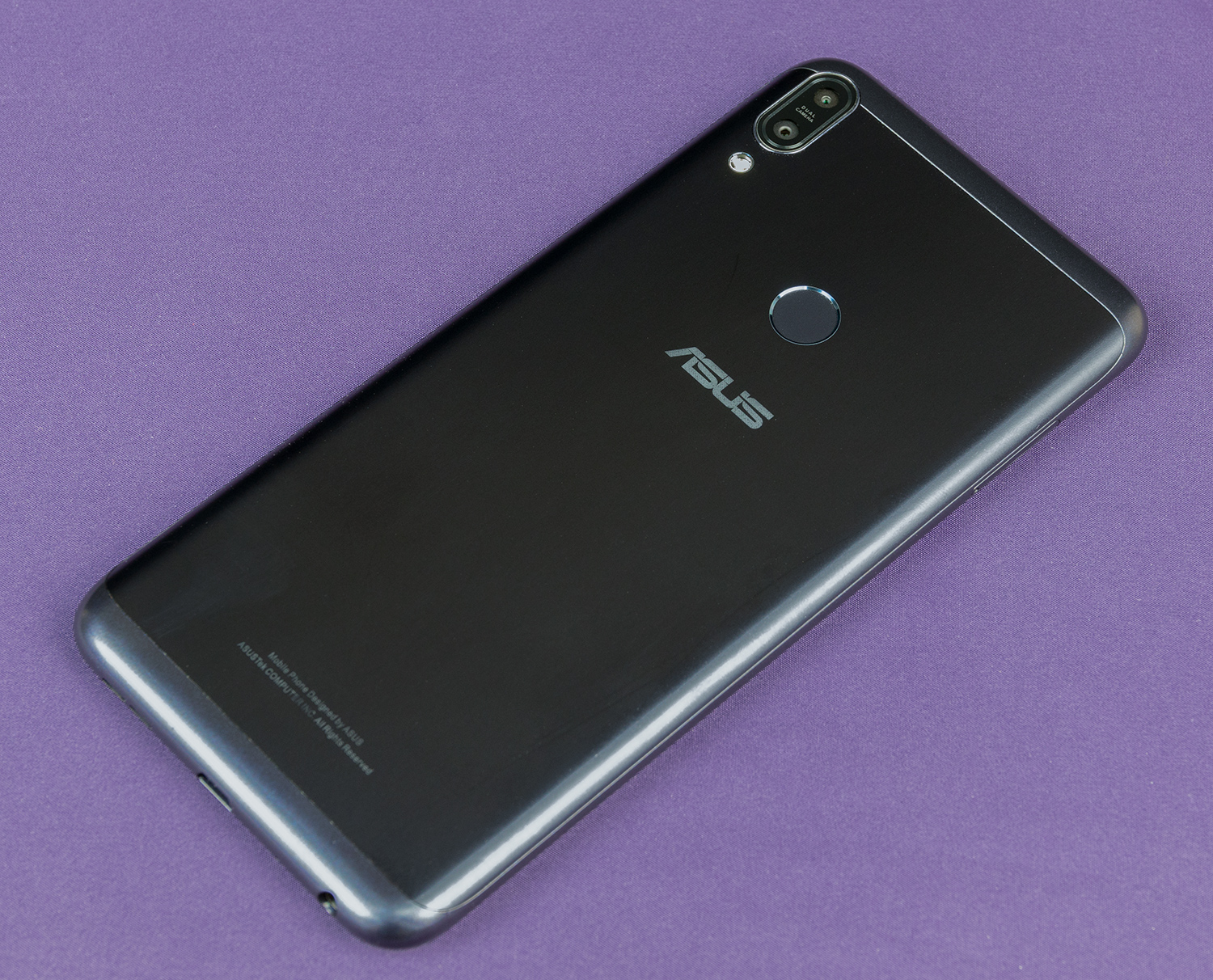
On the back of the phone is a fingerprint scanner, a module with cameras and an LED flash - all as you are used to.
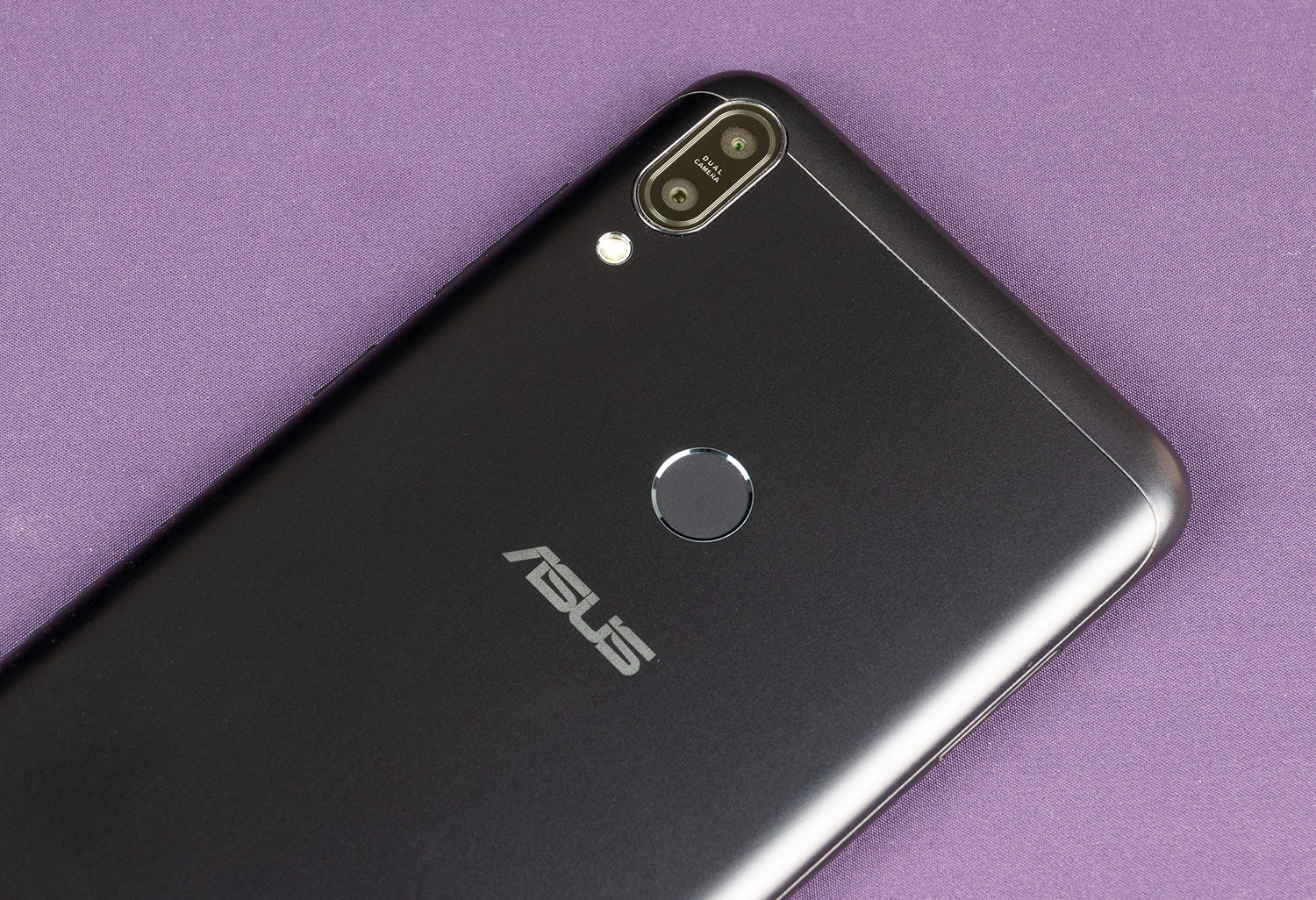
The location of elements on the left and right sides of ASUS ZenFone Max Pro (M1) is standard for modern smartphones. On the right is the Power button and volume change keys, and on the left is the SIM card and memory card tray. Tray ASUS ZenFone Max Pro (M1) was triple. You can connect two SIM cards of the Nano-Sim format to your smartphone and at the same time a memory card of up to 2 TB in size. There is no need to choose between a memory card and a SIM card.
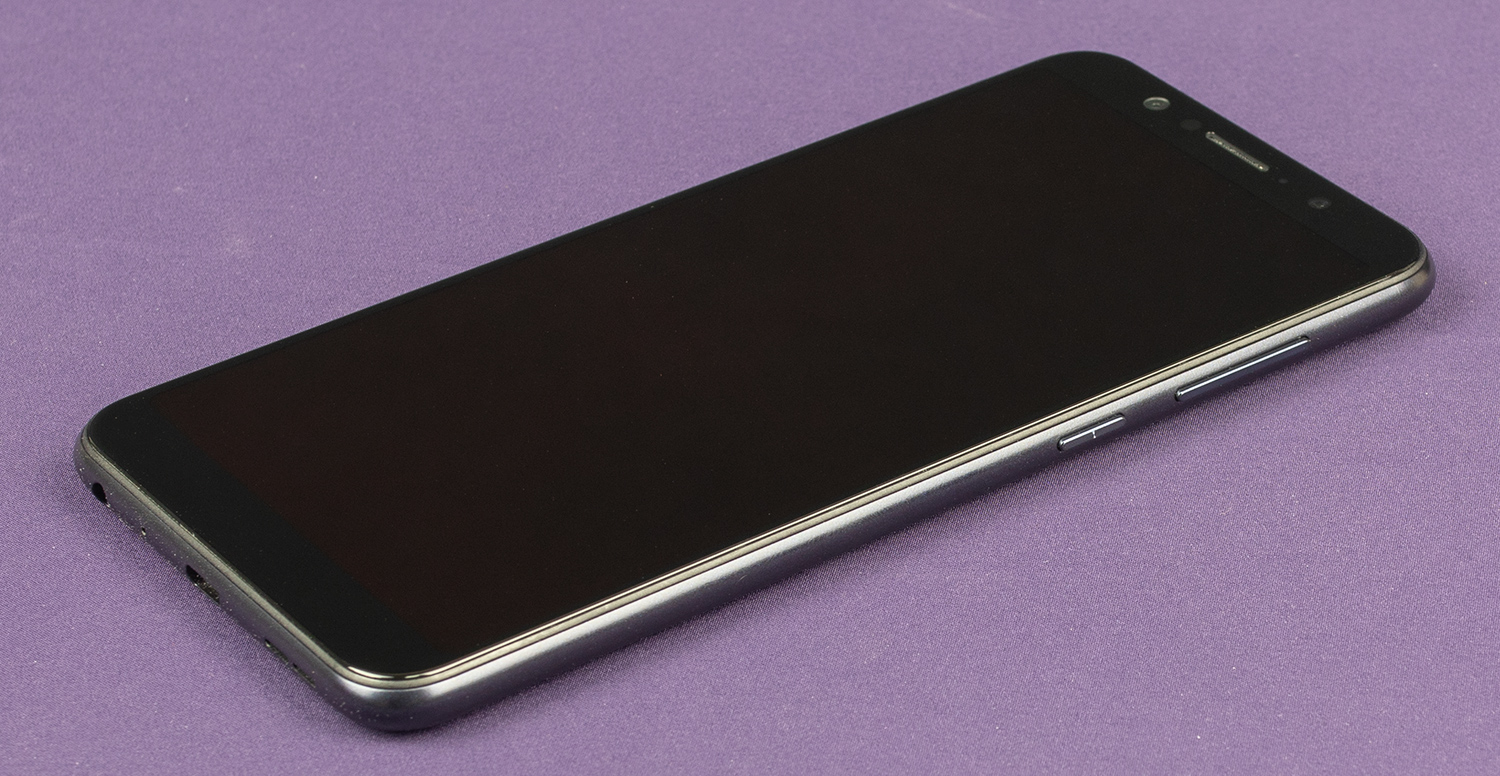
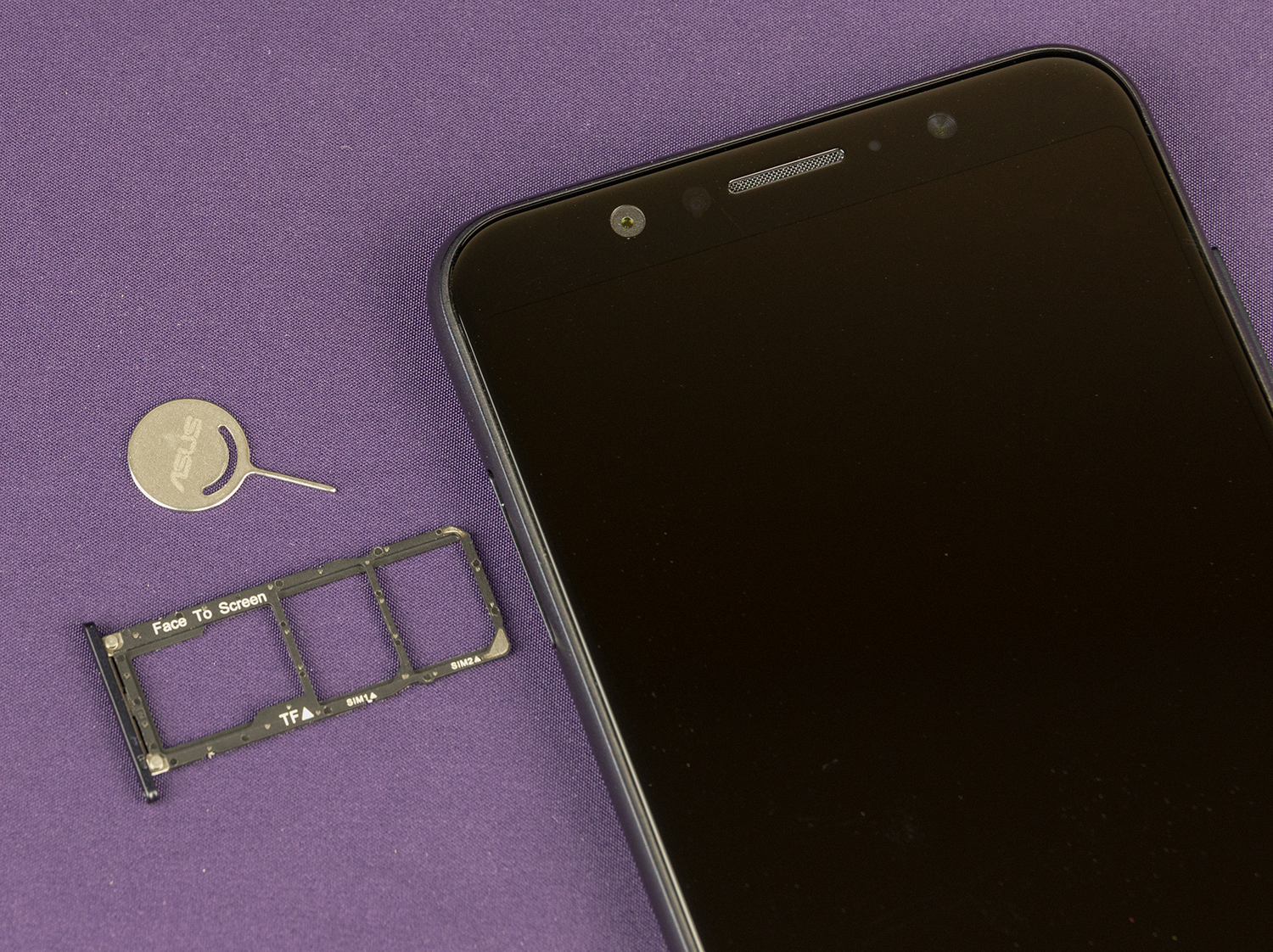
The Micro USB connector and the 3.5 mm audio jack for the headset are in their usual place - on the bottom of the smartphone. Here, on the right side of the bottom face, is the speaker.

Screen
The first thing we always pay attention to, for the first time picking up a new smartphone, is its screen. It is the color quality of the display and its dimensions that largely determine the first impression. ZenFone Max Pro (M1) received a 6-inch ISP-screen with a maximum brightness of 450 cd / m ^ 2, a contrast of 1,500: 1 and an NTSC color space span of 85%. The frames of the screen are thin, and it occupies 83% of the entire front panel.
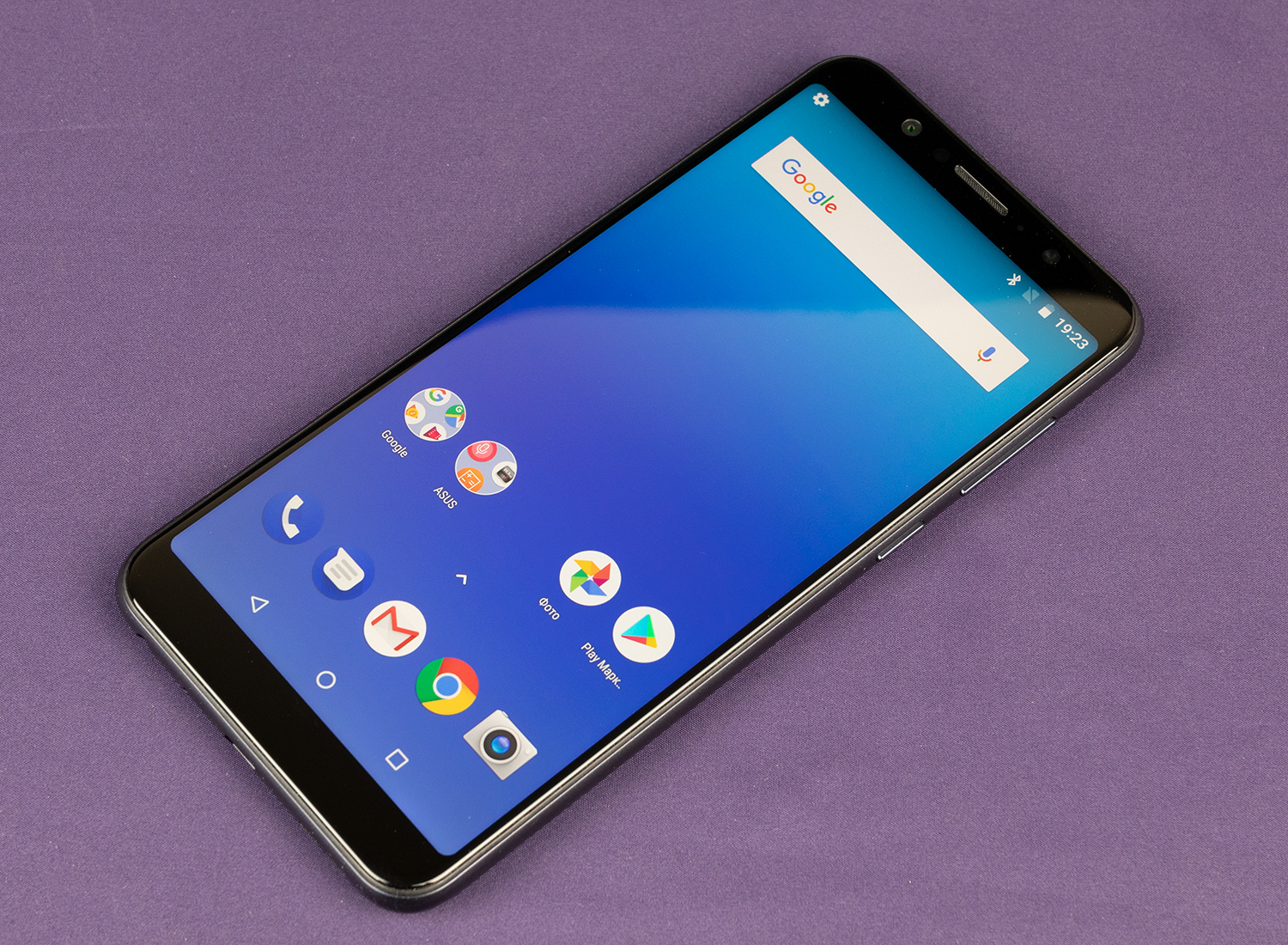
The display of the smartphone did not receive "monobrow", "cut", and other design tricks - it is rectangular. Its resolution is 2160x1080 pixels, and the aspect ratio is 18: 9. As we have already written, the screen diagonal of ASUS ZenFone Max Pro (M1) is 6 inches, but the dimensions of the Max Pro case (M1) correspond to a 5.5-inch smartphone. Therefore, in order to fit the 6-inch display in such dimensions, it was necessary to extend it “upwards”, simultaneously changing its resolution and aspect ratio. By the way, on this display it is more convenient to watch a widescreen video than on a standard one.

Cameras
On the reverse side of ASUS ZenFone Max Pro (M1) there are two cameras. The first camera with a resolution of 13 megapixels and phase autofocus is suitable for any everyday photos. Working in automatic mode, the main camera correctly identified the shooting conditions. From the manual settings available to change the ISO, shutter speed and white balance. Video shooting is available in three basic resolutions: 720p, 1080p and 4K.
Examples of pictures from a regular camera























The second camera - portrait - received a sensor with a lower resolution of 5 megapixels. The resolution is less, but it can blur the background behind the subject and in front of it. To do this, simply switch to the appropriate mode and click on the screen at the focus point. After that, you can choose the size of the virtual aperture. What is worth noting that this function works by the forces of the camera itself, and not by simple filter overlay. Therefore, blurred photos look natural.




Of course, there is also a selfie camera, she got the resolution of 8 megapixels and a separate flash. There is a self-improvement mode, when it is activated, skin defects are automatically hidden, you can make the look more expressive, or you can simply achieve a more juicy color rendition.
Soft
ASUS ZenFone Max Pro (M1) is running the operating system Android 8.1.0 Oreo. The OS is available in its original pure form, and the intervention of ASUS software is minimized. From the proprietary utilities, only a voice recorder, FM radio and a calculator are installed. As for updates, in the future ZenFone Max Pro (M1) should receive an update to Android 9.0.



A set of pre-installed software truly spartan. It is assumed that all the necessary user will find on their own on Google Play, which is very easy to do thanks to the openness of Android. Change the dialer, launcher, keyboard, application for working with SMS can be a couple of clicks on the screen. But do not rush to install a lot of new software, it is possible that you have enough built-in capacity of the operating system itself.
Iron
ASUS ZenFone Max Pro (M1) is equipped with a productive Qualcomm Snapdragon 636 processor, which was announced in the second half of 2017. The main feature of this 8-core CPU is the processor cores built on the new Kryo 260 architecture. As usual, for multicore smartphones, they are divided into two clusters: “slow” and “fast”. In the first, there are 4 Kryo 260 cores operating at a maximum speed of 1.6 GHz, and in the second cluster - the same 4 cores that can accelerate to 1.8 GHz. Volumes of operational and permanent memory depend on the modification. In stores ASUS ZenFone Max Pro (M1) will be found in two versions: with 3 or 4 GB of RAM and 32 or 64 GB of permanent memory. Simply put, in two versions: 3/32 and 4/64. All other parameters will be unchanged.
In the popular benchmark AnTuTu, ASUS ZenFone Max Pro (M1) scored 113,986 points, which is a lot for a smartphone of the average price category, and higher than that of many analogues. The same can be said about 3DMark - the new Adreno 509 accelerator showed good results in the Sling Shot tests.
Benchmark Results

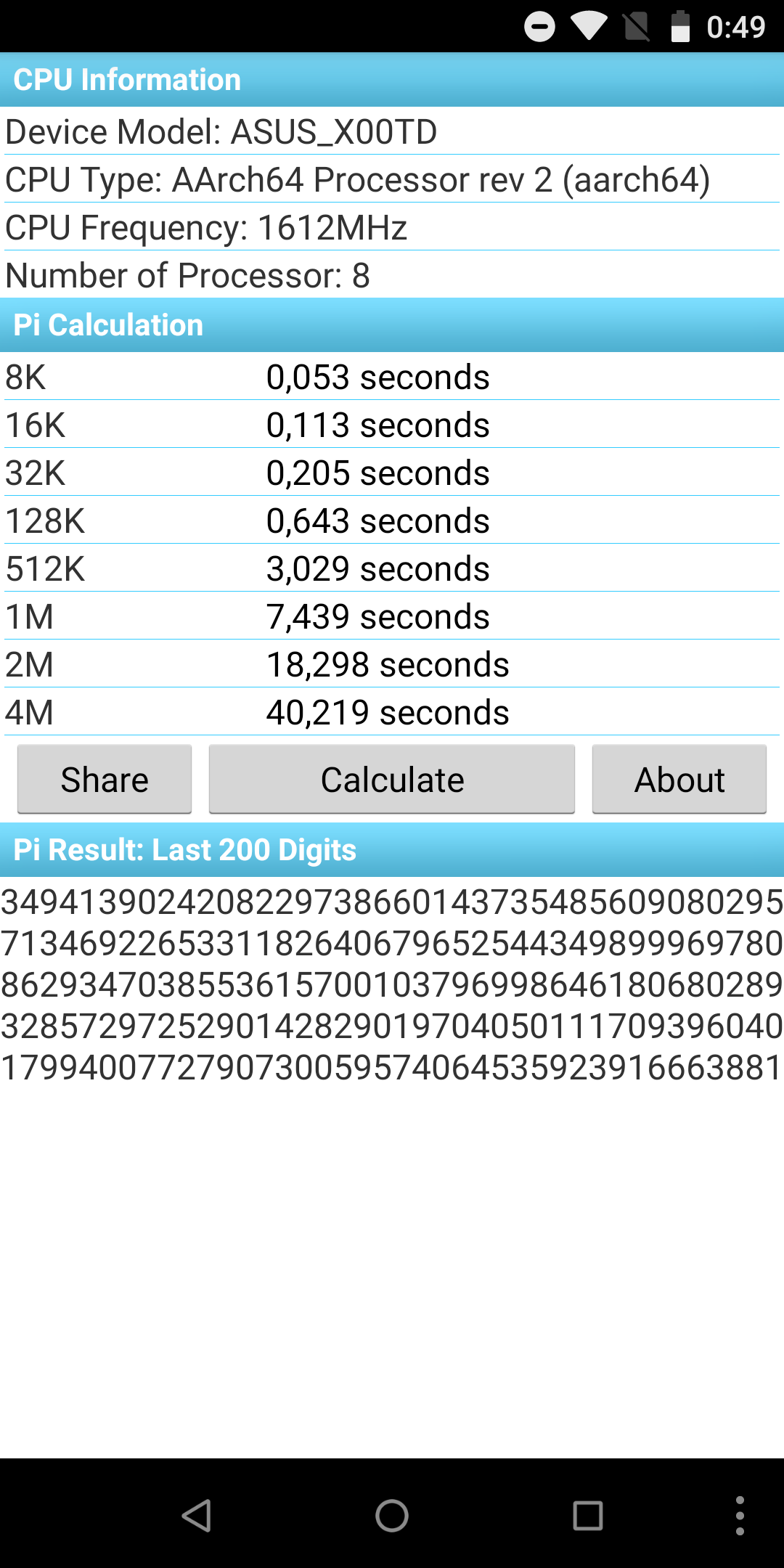
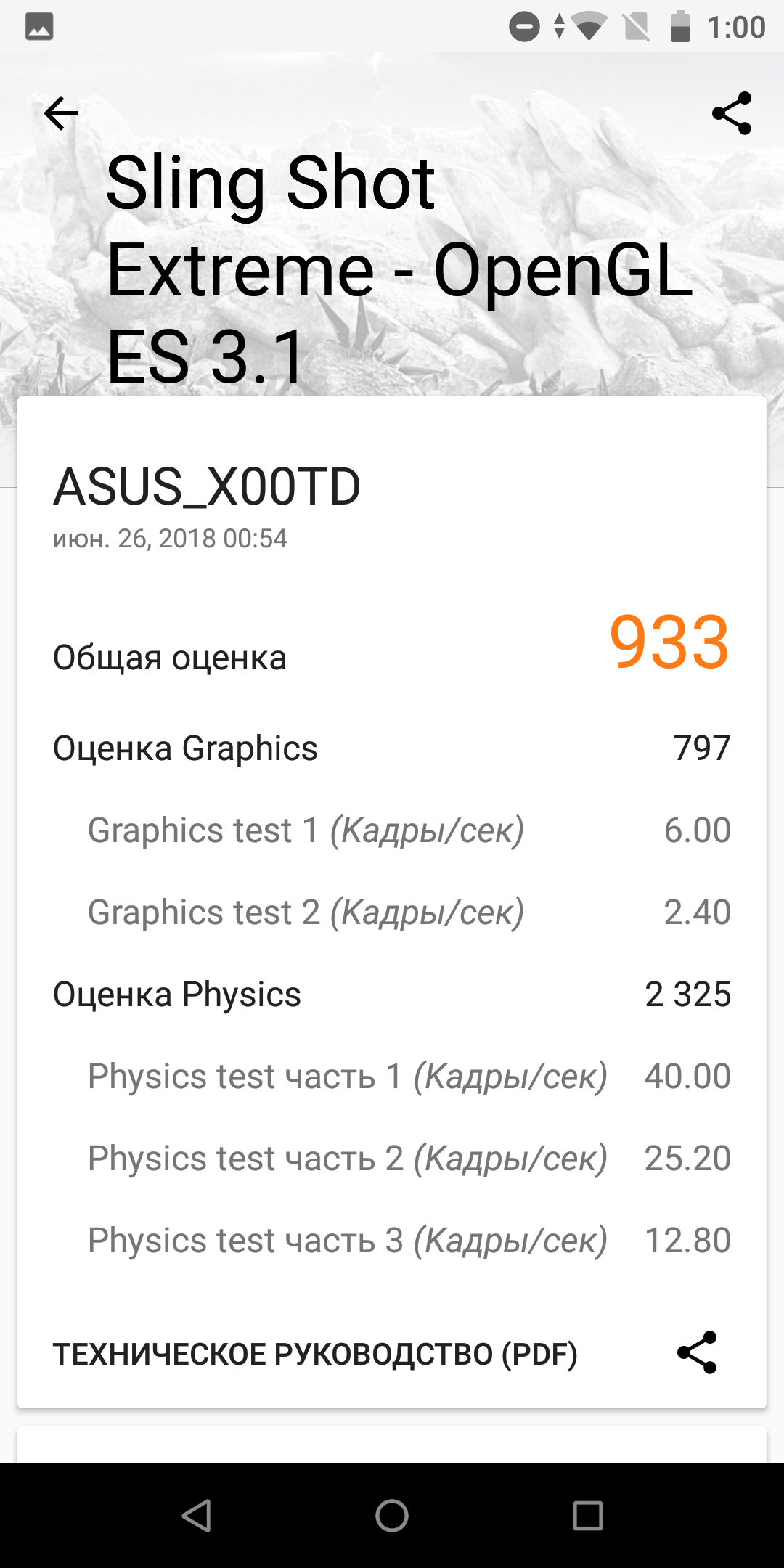








In World Of Tanks Blitz, PUBG and Asphalt 8 there were no lags and brakes. The Snapdragon 636 system without any problems pulls such toys at high picture quality settings.


A striking feature is the 5000 mAh battery. Due to this indicator, the phone with an average load works up to two days. Of course, this parameter strongly depends on the intensity of use, which is a personal feature of each owner. But if you do not watch the video for 6 hours without stopping, you can not remember about charging until the end of the next day. By the way, the novelty supports fast charging, and from 0 to 100% the battery will charge in less than 3 hours.
Another surprise lies in the full support of NFC. With it, you can use contactless payments, which daily increases your level of comfort. For this price category, this is a big plus, which was previously unavailable.
Well, if you like to watch movies and online videos on your smartphone, then you will definitely like the quality of the new speaker, which uses five magnets, a metal coil and a new smart NXP amplifier. Because of this, even low frequencies will sound clean, without cracking at high volume.
Conclusion
ASUS ZenFone Max Pro (M1) - not like everything. This smartphone sets new standards of quality and performance in the price segment up to 16 thousand rubles. One of the striking differences lies in the use of a pure Android system without a proprietary ZenUI shell. This will allow you to install only the most necessary software, thereby personalizing the smartphone as much as possible.
You can not ignore the incredibly capacious battery of 5000 mAh, support for NFC and the use of the productive platform Snapdragon 636, thanks to which all games operate at high settings. Also a big plus is a high-quality IPS matrix with a high resolution of 2160x1080 and high brightness.
A high-quality camera will allow you to take memorable pictures that can be shared with friends, as well as create portraits using the background blur function.
And all this is now available in Zenfone Max Pro (M1) for 13,990 rubles in version 3/32 GB. If you want a top-end modification of 4/64 GB, you will have to increase the budget to 15,990 rubles.
